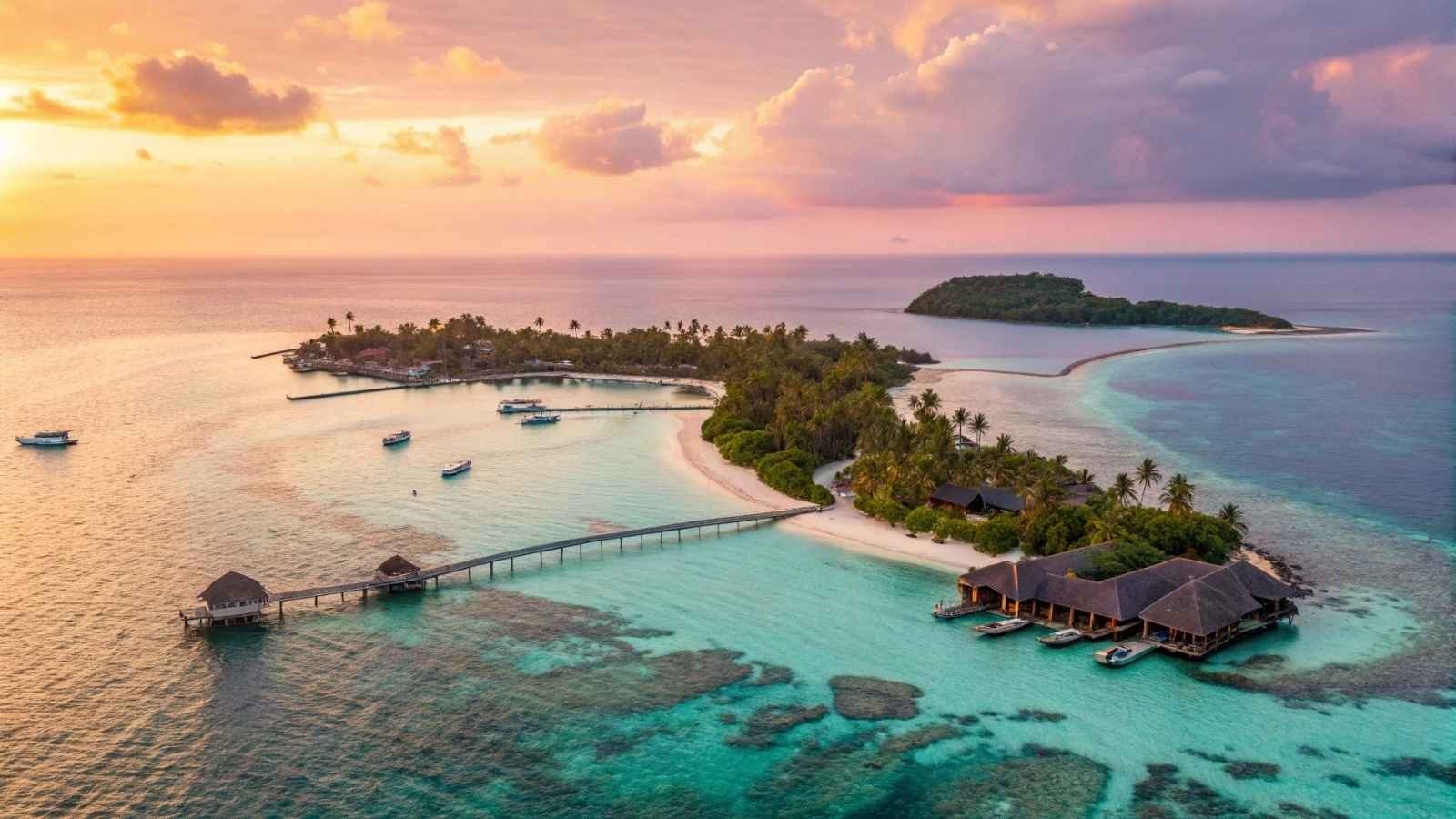
Craving that moment when the world slows, the light bends just right, and the sky feels almost alive? Sunsets have a way of stopping us in our tracks, no matter where we are.
There’s something about those fleeting minutes—the gold melting into crimson, the shadows stretching long—that makes everything else fade. This list is for the dreamers, the travelers, and the ones chasing that perfect glow.
We’re talking about places where the horizon puts on a show so surreal, your camera can barely keep up. Ready to feel your jaw drop? Let’s chase the most unforgettable golden hours on Earth.
1. Santorini, Greece
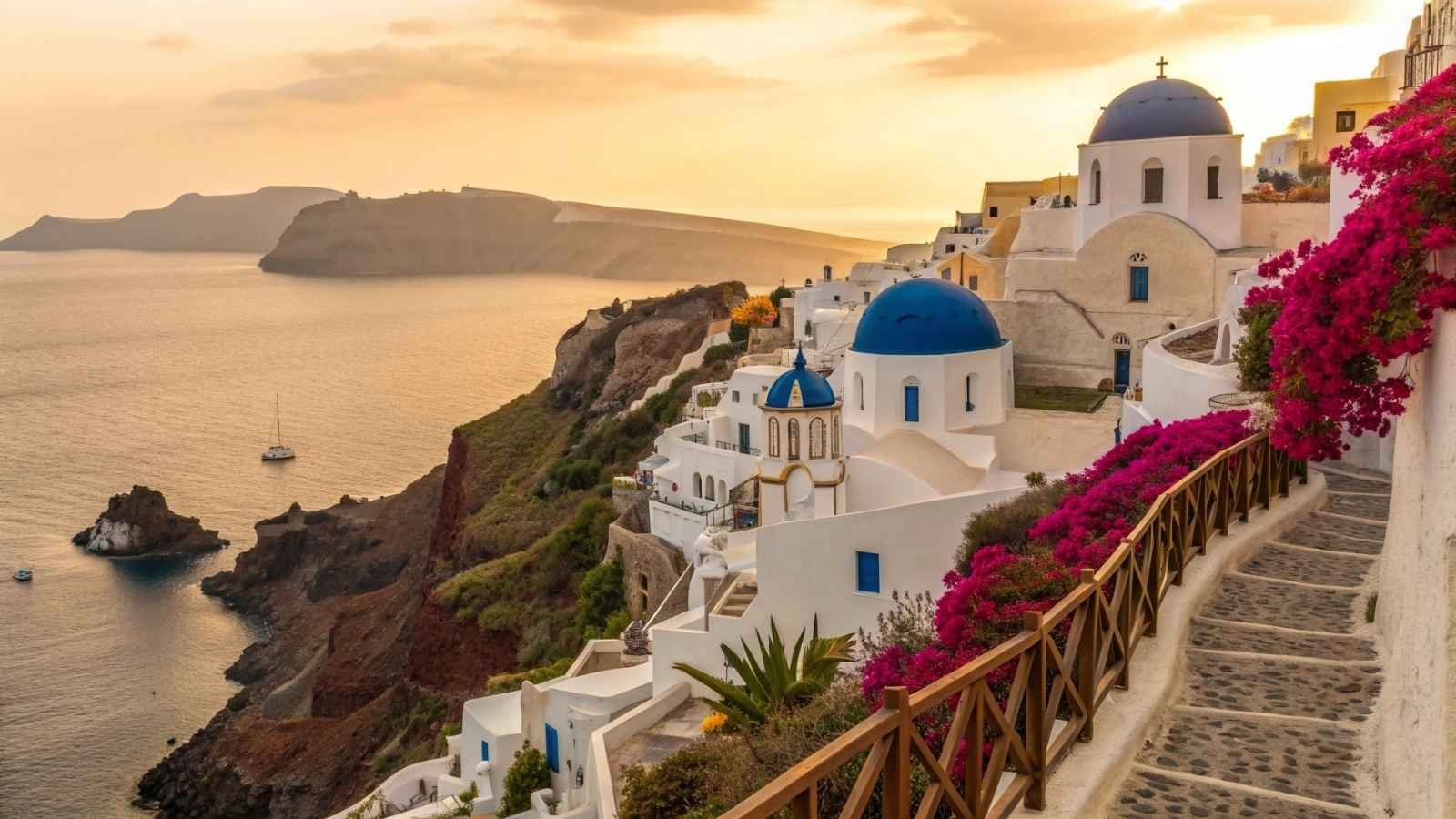
There’s something magnetic about Santorini’s sunsets. The whitewashed cliffs of Oia glow as the sky shifts from gold to pink and finally to a deep, fiery orange. The Aegean Sea becomes a mirror, reflecting those colors in a way that feels like the island is performing just for you. It’s no wonder travelers crowd the narrow streets hours before sunset to claim the best view.
What makes it even more mesmerizing is the contrast: white domes, cobalt blue roofs, and a horizon that never seems to end. The light here is soft but dramatic; photographers call it some of the best golden-hour lighting on the planet. It’s not just about the sun sinking—it’s about how the entire island turns into a warm canvas.
And here’s the secret: the real magic often happens right after the sun disappears. The afterglow lingers, bathing the caldera in hues of purple and rose. That’s when many people pack up, but those who stay get the bonus show.
Quick tips for Santorini sunsets:
- Best months to visit: May–October (peak colors and clear skies)
- Best viewing spots: Oia Castle, Amoudi Bay, Fira rooftops
- Crowd factor: Extremely busy; arrive early to grab a spot
- Best way to enjoy: Book a sunset dinner or catamaran cruise to avoid the crowds
2. Bora Bora, French Polynesia
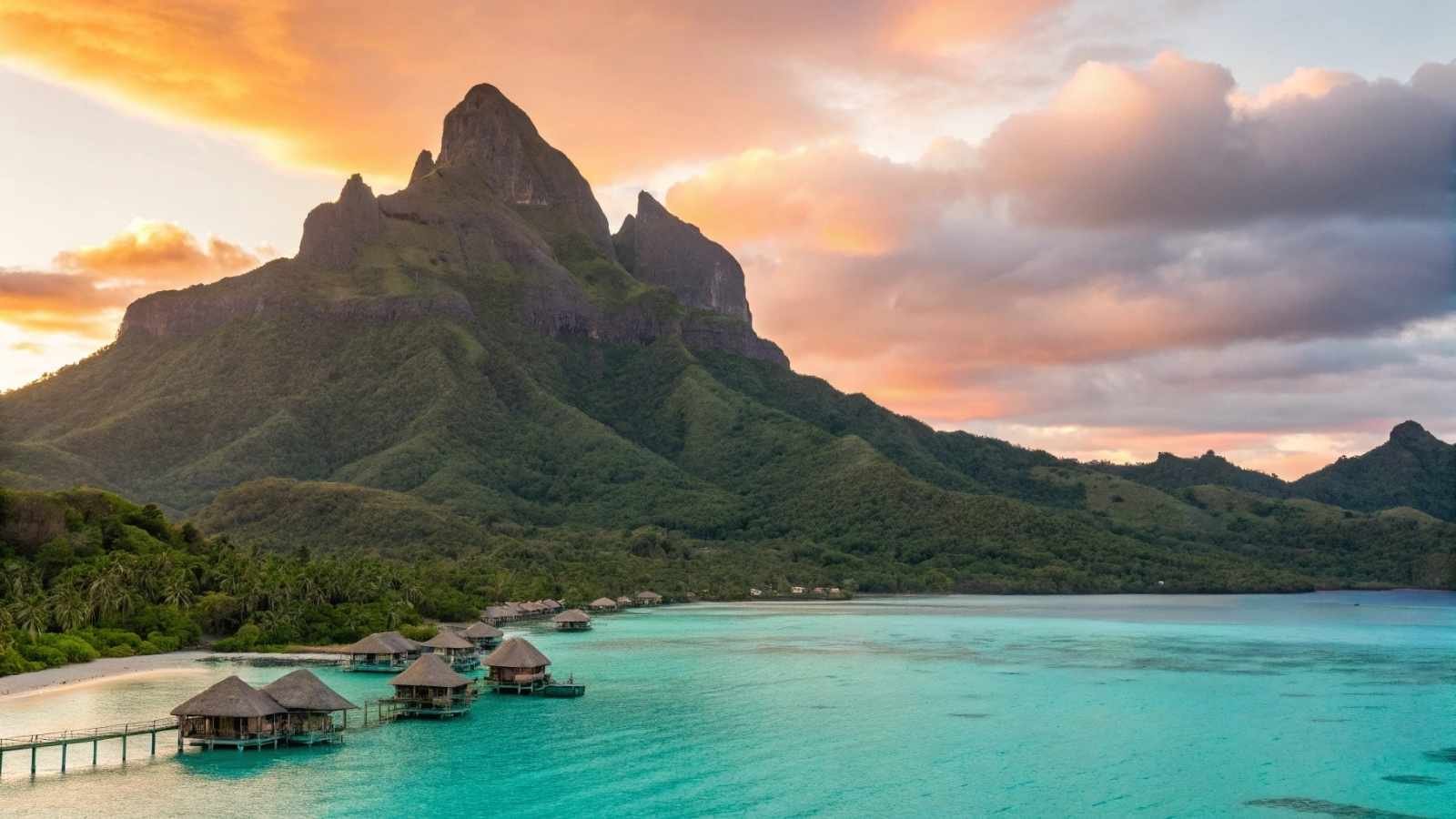
Bora Bora doesn’t just have sunsets—it has sunsets that feel like they belong in another world. The colors here aren’t subtle; they are bold strokes of tangerine, crimson, and violet, spread across a calm turquoise lagoon. The silhouettes of the overwater bungalows and the iconic Mount Otemanu add a cinematic frame to every shot.
Part of what makes Bora Bora’s golden hour so remarkable is the clarity of the air and water. Even on a quiet evening, the lagoon reflects the changing sky, and it’s hard to tell where the water ends and the heavens begin. It’s that kind of visual drama that makes every traveler a photographer, even with a phone camera.
Sunsets here are also slower. The Polynesian latitude means the transition from day to night feels drawn out, giving plenty of time to soak it in. Watching the last rays of sunlight bounce off the lagoon while sipping on fresh coconut water is the kind of moment that stays with you long after you leave.
Quick tips for Bora Bora sunsets:
- Best months to visit: May–October (dry season, clearer skies)
- Best viewing spots: Matira Beach, Mount Otemanu viewpoints, luxury resorts’ decks
- Crowd factor: Mostly resort guests, quieter compared to tourist-heavy islands
- Best way to enjoy: Sunset paddleboarding or dinner on a private motu (islet)
3. Grand Canyon, USA
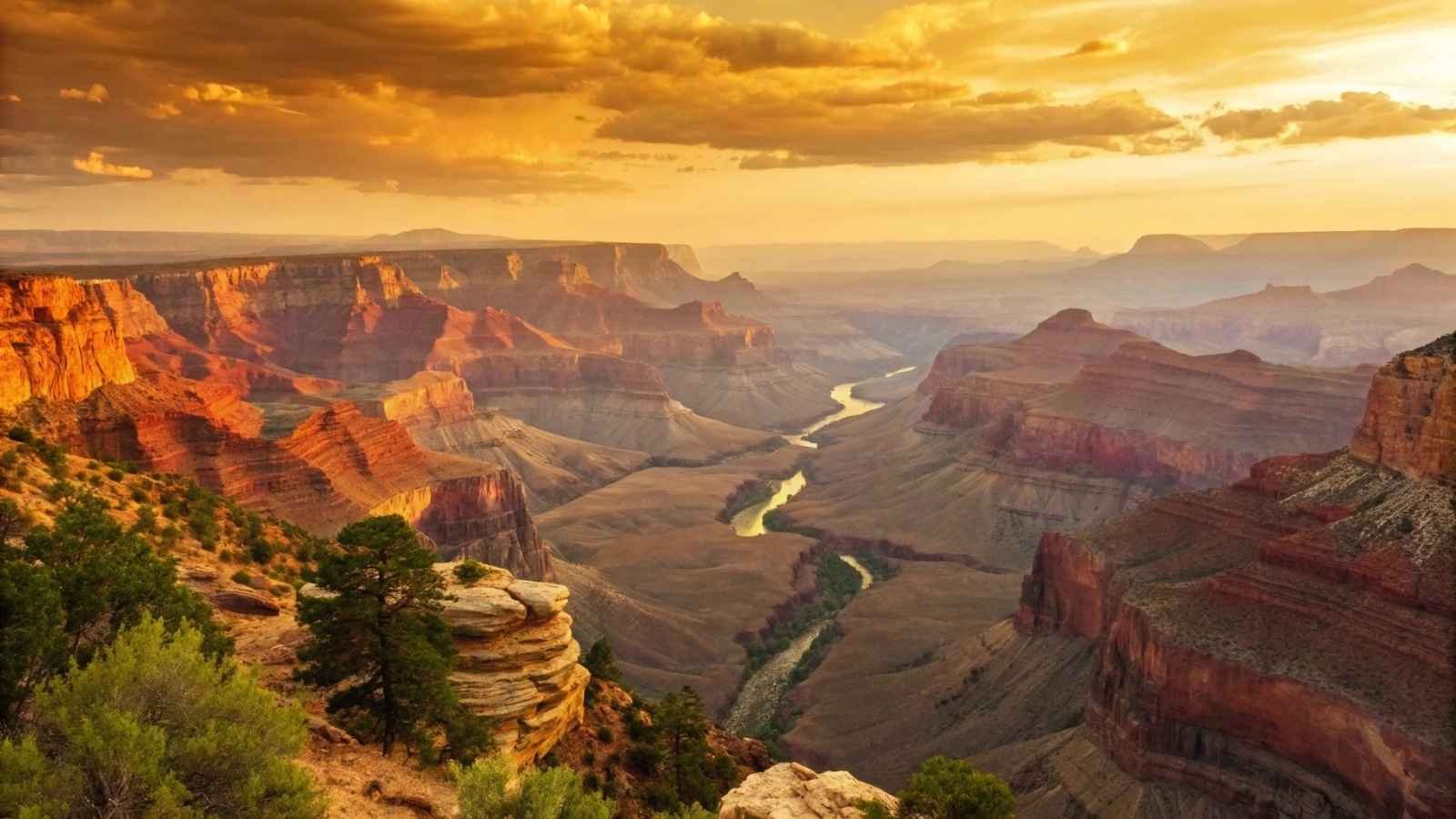
The Grand Canyon has sunsets that feel like they belong to the earth itself—ancient, raw, and enormous. The setting sun pulls shadows across the layered rock formations, turning deep reds into glowing golds and cool purples. The sense of scale here can almost overwhelm your senses; the canyon seems to change character with every passing second.
One of the secrets of a Grand Canyon sunset is its variety. Different rims and overlooks show completely different views. While the South Rim is the most popular, Desert View and Lipan Point are favorites for their sweeping vistas and fewer crowds. And when the sky finally bursts into color, the Colorado River often catches the last light, shining like a silver thread far below.
There’s a hush that falls across the rim when the sun dips—almost as if people collectively pause to absorb it. Even with crowds, it feels strangely intimate, a reminder of how tiny we are compared to this natural wonder.
Quick tips for Grand Canyon sunsets:
- Best months to visit: March–May and September–November (cooler weather, clear skies)
- Best viewing spots: Hopi Point, Lipan Point, Desert View
- Crowd factor: Popular overlooks get crowded; seek lesser-known viewpoints for peace
- Best way to enjoy: Bring layers; temperatures drop quickly after sunset
4. Maldives, Indian Ocean
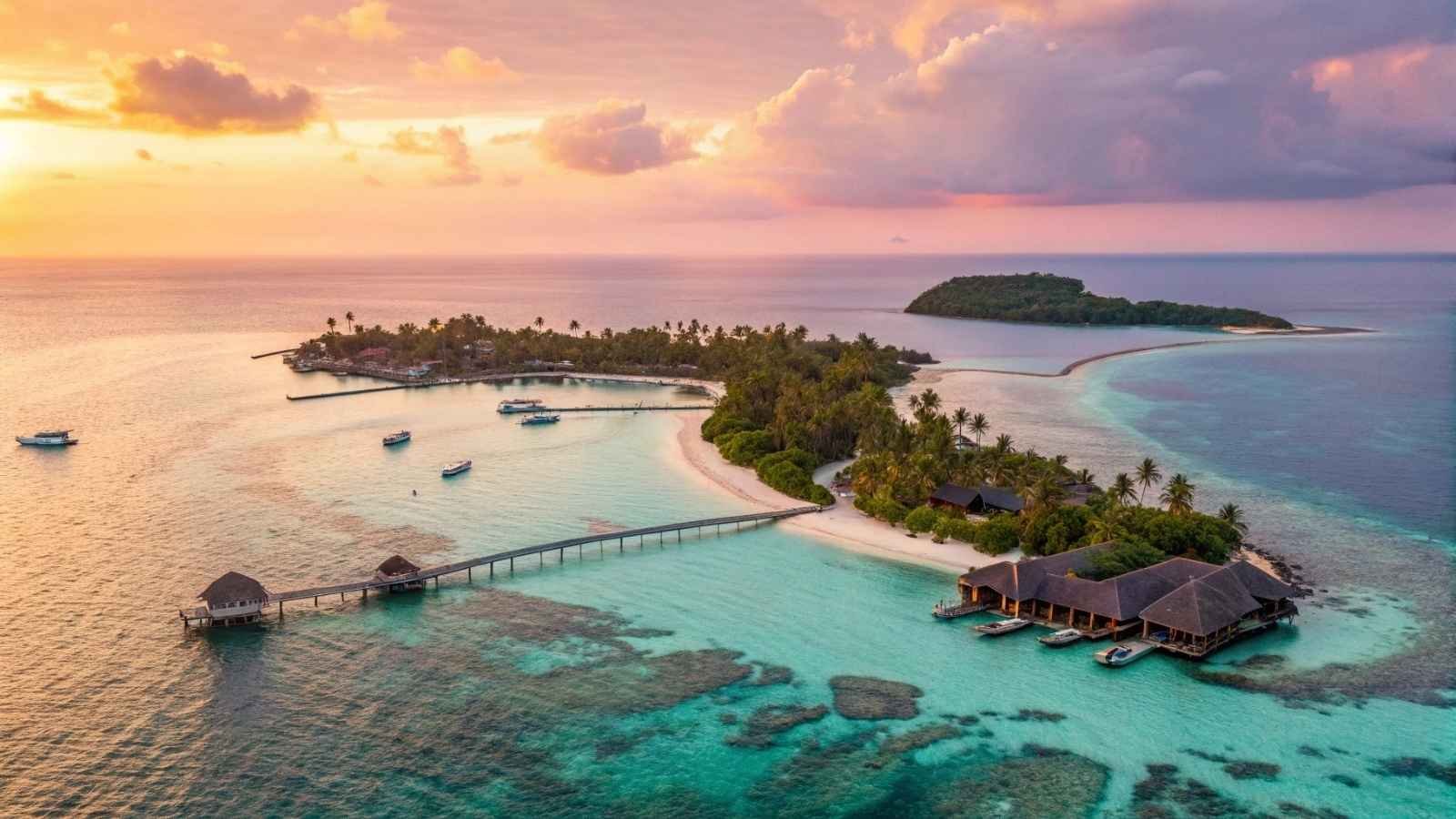
Sunsets in the Maldives are not just an event—they’re a ritual. With overwater villas and endless lagoons, every evening feels like a front-row seat to nature’s theater. The warm Indian Ocean breeze and quietness add to the feeling of exclusivity; often, you’re sharing the moment with just a handful of people.
The colors here are softer compared to volcanic islands, but just as stunning. Golden amber tones melt into the horizon, with hints of lavender and coral streaking the sky. What makes the Maldives special is how low the sun sits, making the water shimmer like liquid glass. Even better, the low light plays beautifully with the marine life just below the surface—you might spot a ray gliding by.
The best moments? Watching from a deck or sandbank with your feet in the water. The island’s remoteness gives the feeling of being on the edge of the world, with nothing but sky and ocean in every direction.
Quick tips for Maldives sunsets:
- Best months to visit: November–April (dry season, calmer seas)
- Best viewing spots: Private resort decks, sandbanks, sunset cruises
- Crowd factor: Low; mainly couples or small groups
- Best way to enjoy: Book a sunset dolphin cruise or dinner on the beach
5. Uluru (Ayers Rock), Australia
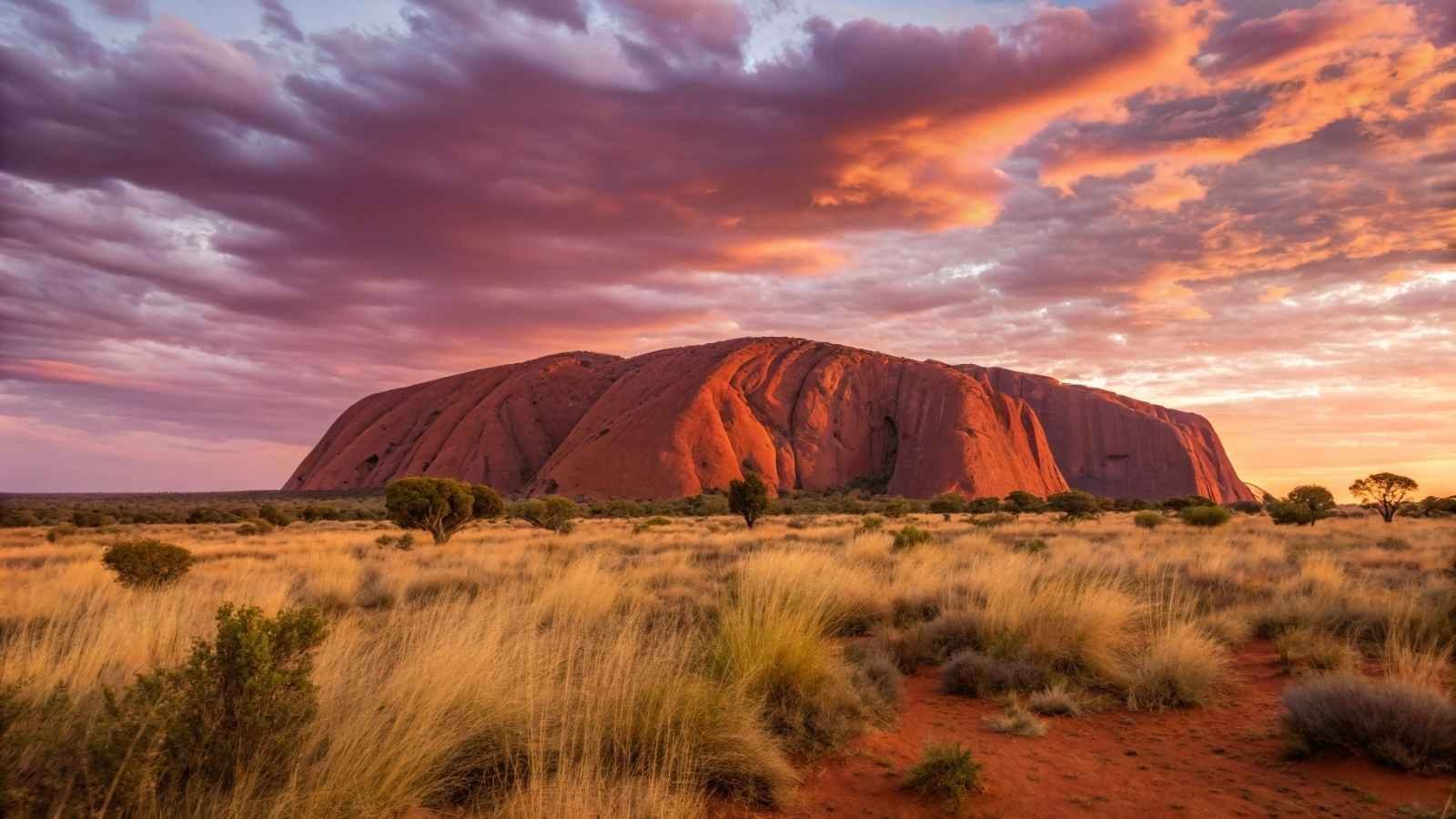
Few sunsets are as spiritual as those over Uluru. This massive sandstone monolith, sacred to the Anangu people, transforms dramatically as the sun dips—shifting from earthy rust tones to glowing crimson, and finally to a deep violet. The sheer scale of Uluru against the endless desert sky makes the show unforgettable.
It’s not just about the color changes; it’s the silence and the sense of space that make it extraordinary. Standing there, you feel the ancient presence of the land, the desert stretching endlessly in all directions. The soft light highlights every curve and crack on the rock’s surface, giving photographers incredible textures to capture.
Many visitors say the best part is the after-sunset glow—the rock seems to hold onto the day’s light just a bit longer. It’s humbling, beautiful, and deeply grounding.
Quick tips for Uluru sunsets:
- Best months to visit: April–October (cooler and clearer skies)
- Best viewing spots: Talinguru Nyakunytjaku, Kata Tjuta Dune Viewing Area
- Crowd factor: Moderately busy, but plenty of space to spread out
- Best way to enjoy: Join a guided tour for cultural insights or book a “Sounds of Silence” dinner under the stars
6. Oia, Greece
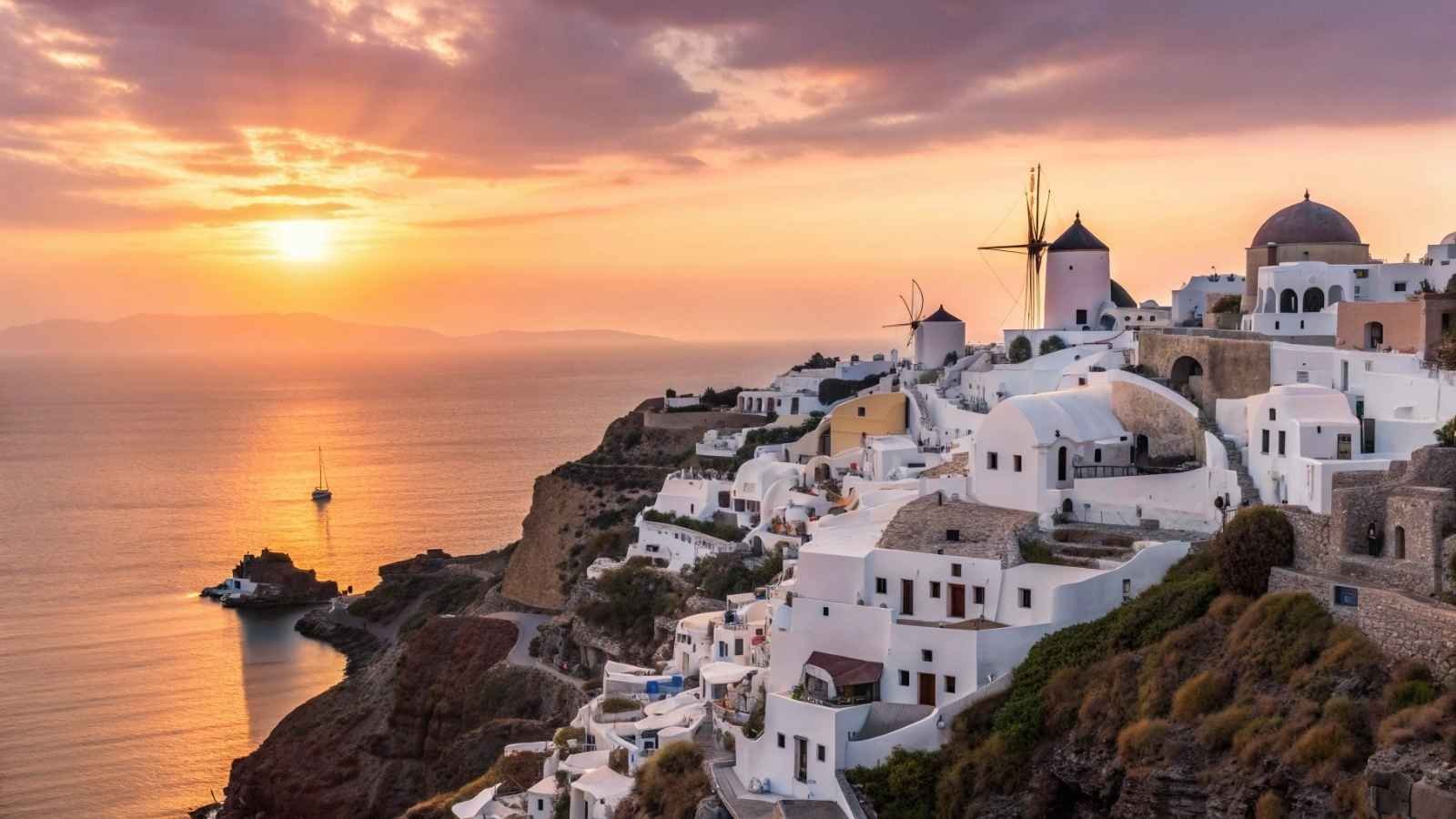
Though Santorini often takes the spotlight, Oia deserves its own mention. This village has a mood all its own—narrow alleys, bougainvillea cascading over stone walls, and that famous view of windmills standing against a burning orange sky. When the sun hits the horizon, the whitewashed architecture seems to glow from within, creating a dreamy backdrop for photos.
What’s remarkable about Oia is how intimate it feels despite the crowds. The sunsets have a softness, almost a painter’s touch, that turns every balcony and rooftop into an art gallery. And when the first stars start peeking out, the streets light up with a cozy warmth that’s hard to leave behind.
For photographers, this is one of the few places where sunset and town merge so beautifully—you’re not just watching the sky, you’re watching it dance across iconic buildings.
Quick tips for Oia sunsets:
- Best months to visit: May–October for clear skies and vibrant colors
- Best viewing spots: Castle of Oia, Ammoudi Bay
- Crowd factor: Very high; plan to arrive at least an hour early
- Best way to enjoy: Book a terrace table at a café to avoid the pushy crowds
7. Serengeti National Park, Tanzania
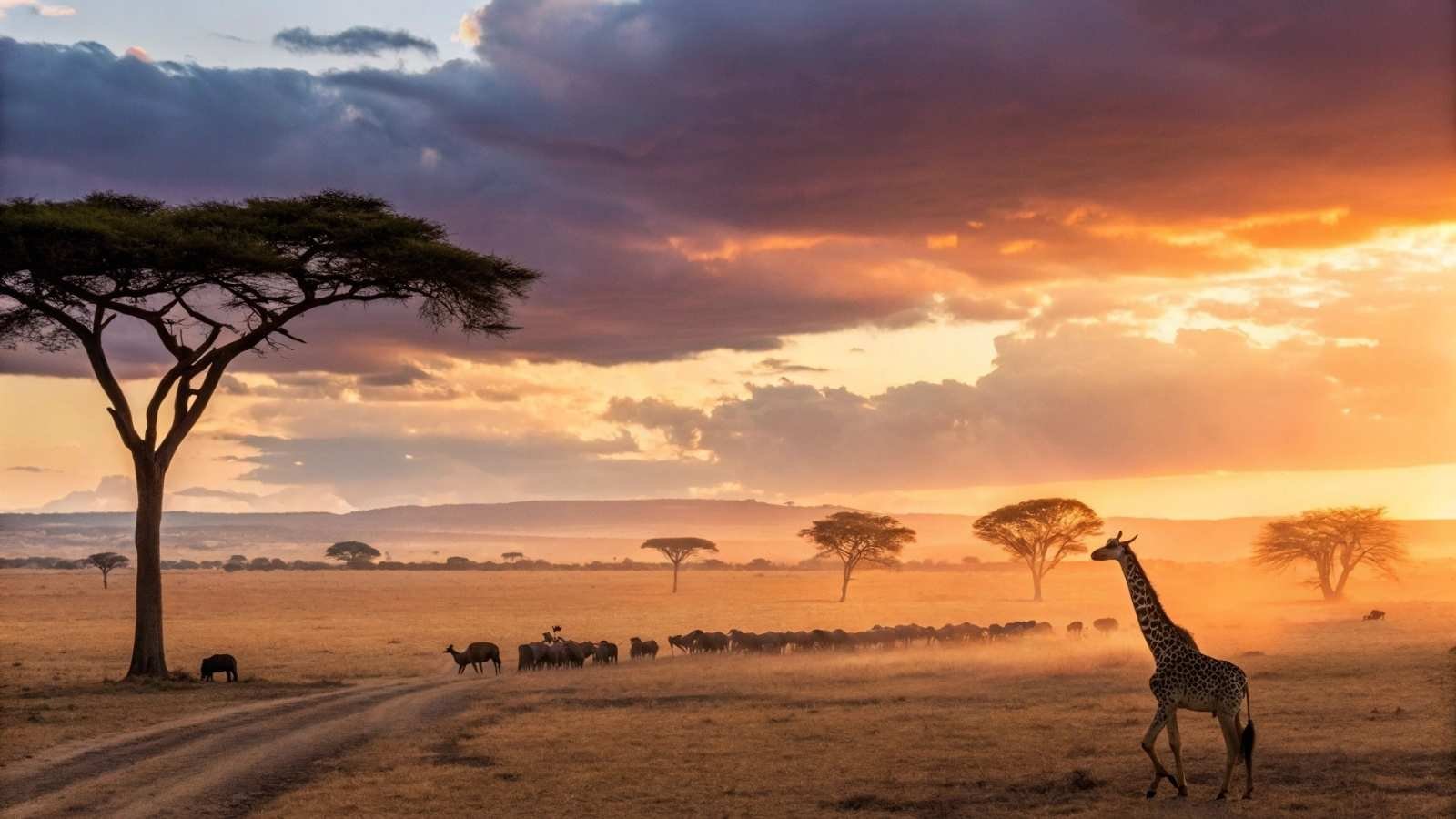
A Serengeti sunset is raw and cinematic. Wide open plains stretch forever, and the sky turns molten gold, often with silhouettes of acacia trees and wildlife in the distance. Seeing giraffes, elephants, or even a lion pride moving across the glowing horizon adds a thrill few other sunsets can match.
The African sun seems closer, bigger, and more intense here. As it sinks, the light softens, casting a rich amber glow over the landscape, while the sounds of nature take center stage—birds, insects, and the low rumble of animals settling in for the night. It’s a reminder that this is a living, breathing world, and you’re part of it for a brief moment.
And if you can watch from a hot air balloon or open safari vehicle, the drama of the land and sky will stay with you forever.
Quick tips for Serengeti sunsets:
- Best months to visit: June–October (dry season, best wildlife viewing)
- Best viewing spots: Central Serengeti plains, Seronera area
- Crowd factor: Sparse; you’ll often have vast views to yourself
- Best way to enjoy: Combine sunset drives with sundowner drinks at a lodge
8. Venice, Italy
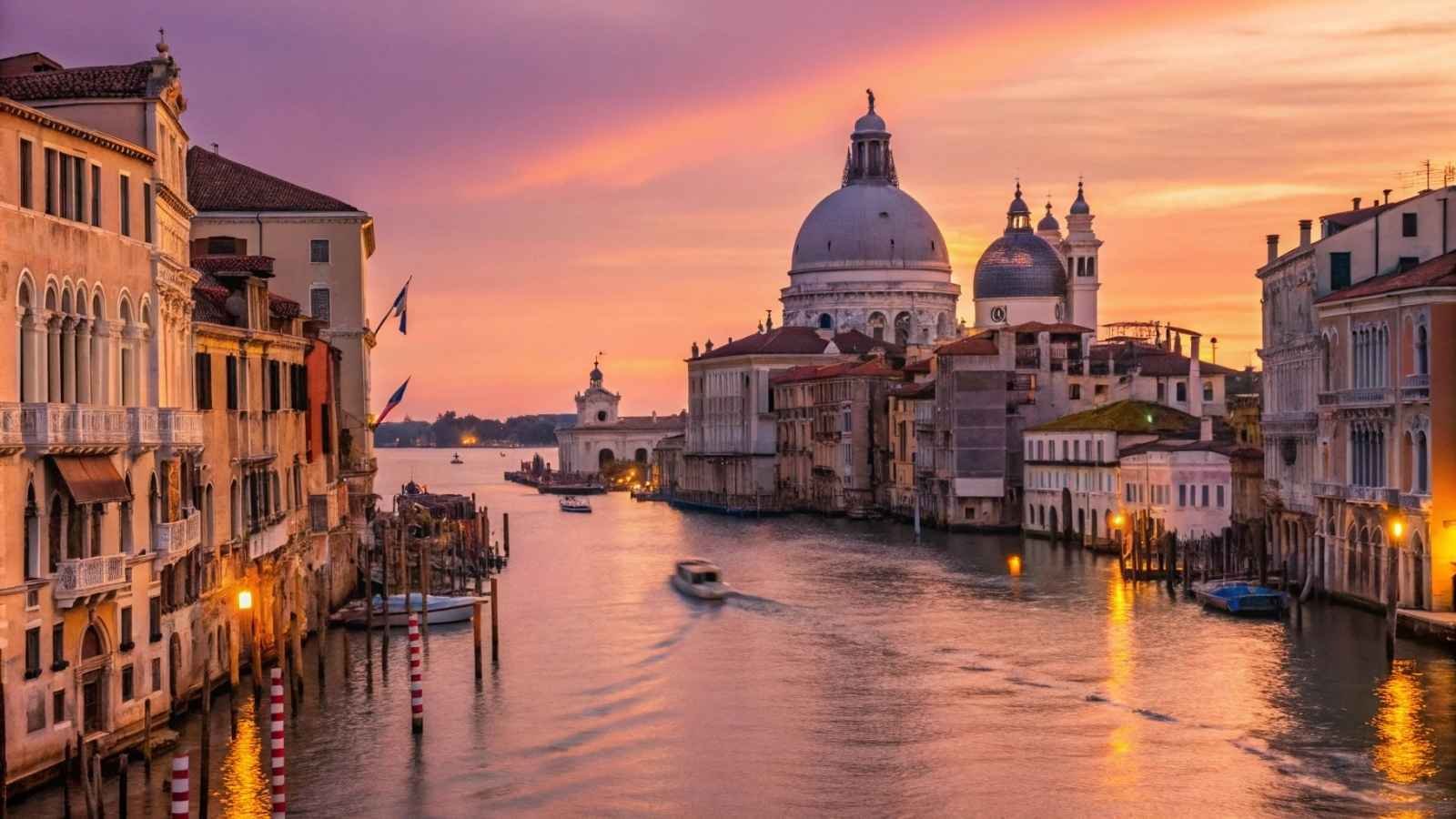
Venice at sunset is like stepping into a watercolor painting. As daylight fades, golden light reflects off canals, bouncing off bridges and ornate facades. Gondolas drift lazily, silhouetted against glowing skies, and the Grand Canal seems to come alive with warm color.
The magic is in the layers—sky, water, and architecture all working together. Even the quieter neighborhoods, away from the crowds, become enchanting at this hour. Watching the sun sink from a vaporetto (water bus) gives a front-row seat to a city that’s best experienced on the move.
There’s a romance to Venice’s sunsets that’s hard to replicate. It’s not just about the sky; it’s about how it spills into every corner of the city, making even a quiet walk feel like a celebration.
Quick tips for Venice sunsets:
- Best months to visit: April–June and September–October (mild weather)
- Best viewing spots: Rialto Bridge, Zattere promenade, St. Mark’s Basin
- Crowd factor: Busy around main canals; quieter in Dorsoduro or Cannaregio
- Best way to enjoy: Take a gondola ride near sunset for a classic experience
9. Key West, Florida, USA
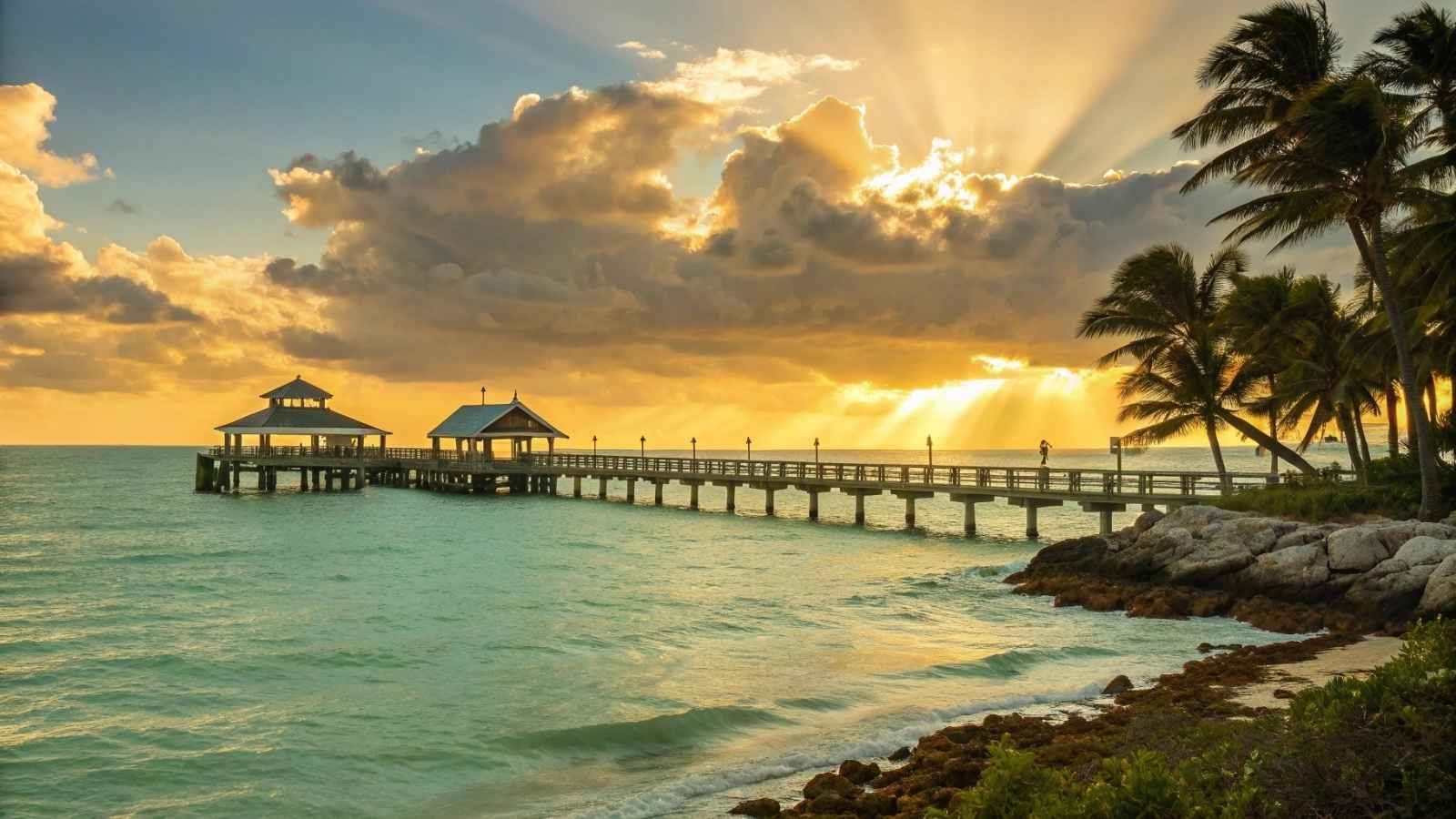
Key West sunsets are a party. They’re not just about colors; they’re about atmosphere. At Mallory Square, street performers, musicians, and locals gather every evening to celebrate the day’s end. The horizon lights up with oranges, pinks, and purples, often framed by sailboats catching the last wind.
What makes Key West special is the sense of community around sunset. It’s lively but somehow relaxed, the kind of place where you’ll find yourself clapping as the sun dips—a quirky, cheerful ritual that just feels right. And if you’re on the water, the experience gets even better: the Gulf of Mexico turns into a giant mirror, doubling the beauty.
Stay a little after sunset and you’ll see the sky deepen into dramatic purples while tiki lights come on across the island.
Quick tips for Key West sunsets:
- Best months to visit: November–April (cooler, drier weather)
- Best viewing spots: Mallory Square, Sunset Pier, aboard a sailboat
- Crowd factor: Busy at Mallory Square; quieter on chartered boats
- Best way to enjoy: Book a sunset catamaran cruise with live music
10. Mount Haleakalā, Maui, Hawaii
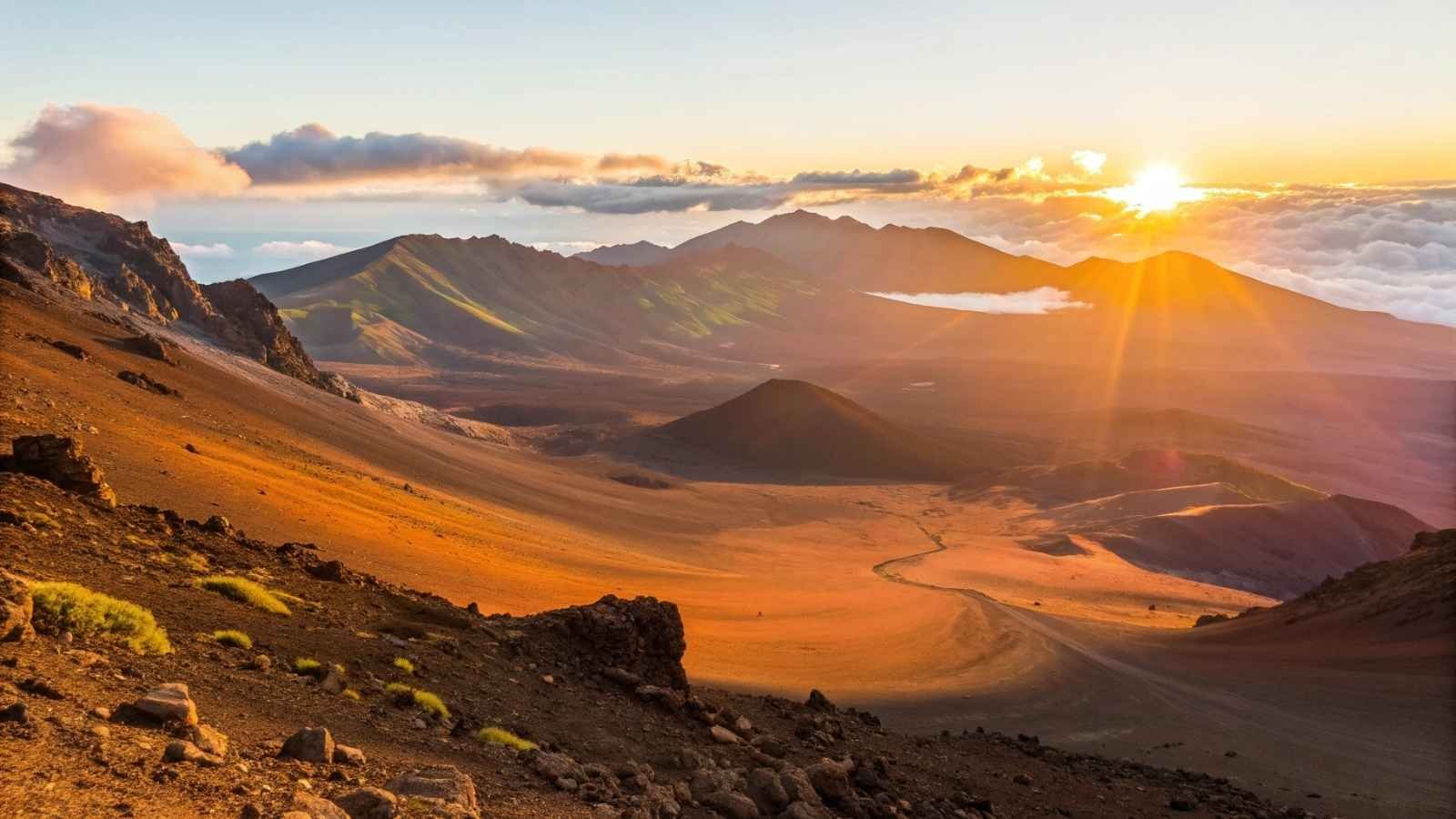
Watching the sun drop from the top of Haleakalā feels like watching the world end and begin again. At nearly 10,000 feet above sea level, you’re above the clouds, watching them swirl and glow as the sun bleeds orange and red. It’s otherworldly, silent, and completely absorbing.
The landscape here adds to the drama—volcanic craters, stark rock formations, and the Pacific stretching endlessly below. Because of the altitude, the air is clear, giving the colors a crispness that’s almost surreal. The drop in temperature adds to the mood, making the warm light feel even more comforting.
What makes Haleakalā even more special is the journey. The winding drive or guided tours to the summit make you earn the view, but once you’re there, the effort feels worth it a hundred times over.
Quick tips for Mount Haleakalā sunsets:
- Best months to visit: Year-round, but May–September offer clearer skies
- Best viewing spots: Haleakalā Visitor Center or Leleiwi Overlook
- Crowd factor: Reservations required for sunrise; sunset is less crowded but still popular
- Best way to enjoy: Dress warmly; temperatures can be near freezing even in summer
11. Masai Mara, Kenya
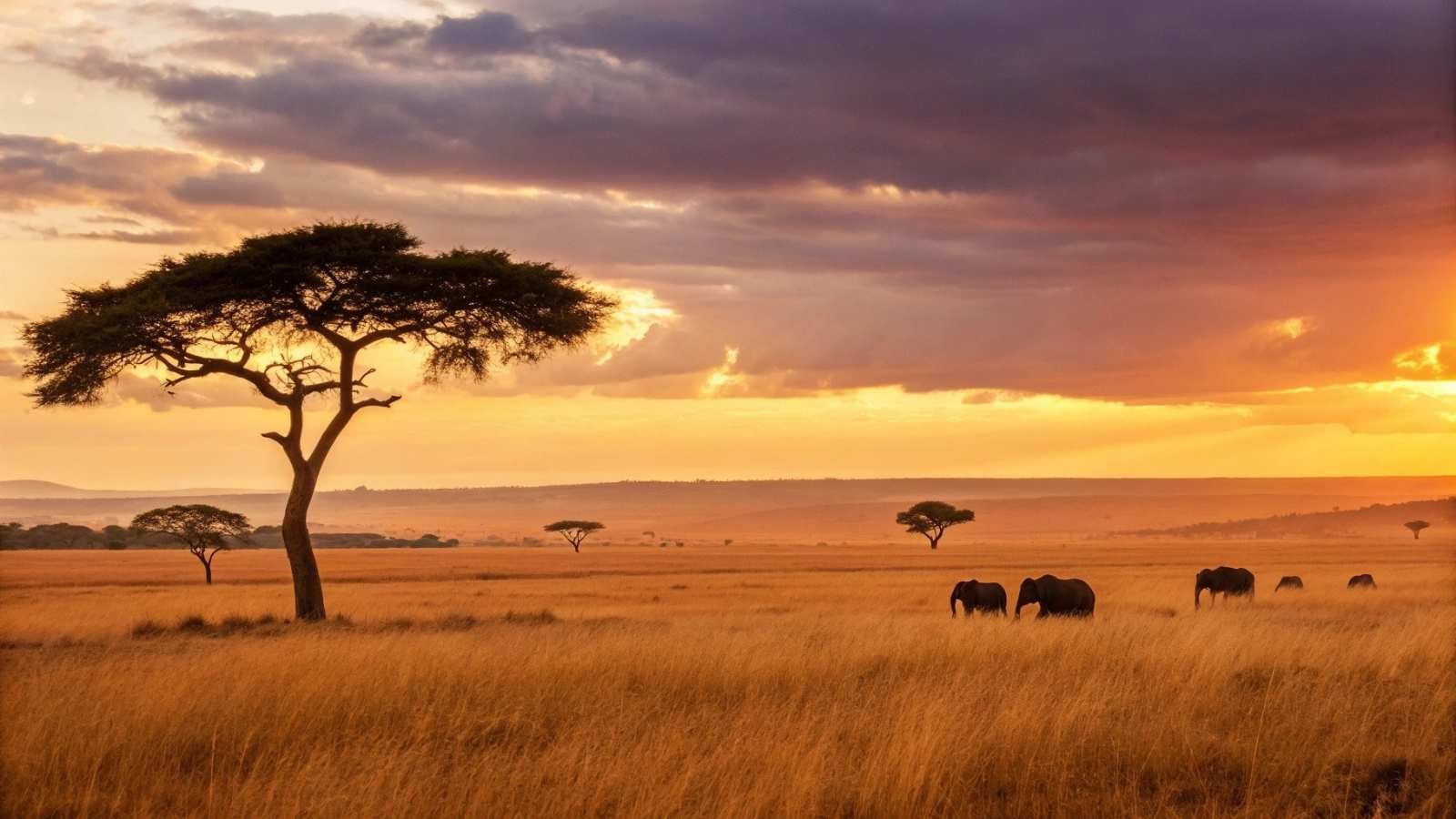
The Masai Mara feels like the world’s biggest stage for a sunset. The sky doesn’t just change color; it roars to life, flooding the savannah with liquid gold and blazing orange. Flat, open land gives nothing to block the view, so you see the entire show from start to finish. Often, you’ll spot wildlife moving in the distance—herds of wildebeest, elephants, or lone acacia trees standing like sentinels against the light.
What’s special here is the soundscape. As the sun lowers, the land hums—birds calling, insects buzzing, and sometimes, the low rumble of big cats hunting. It’s a sensory experience, not just a visual one, and when that fiery ball finally drops, it’s as if the day exhales.
To really feel its magic, go with a guided safari. A vehicle parked on a quiet plain, cold drink in hand, and the sky turning copper—it’s the kind of memory that follows you home.
Quick tips for Masai Mara sunsets:
- Best months to visit: July–October (Great Migration, clear skies)
- Best viewing spots: Anywhere on the open plains, especially near the Talek or Mara River
- Crowd factor: Sparse; you’ll often feel like you have the horizon to yourself
- Best way to enjoy: Evening game drive with a knowledgeable guide
12. Bali, Indonesia
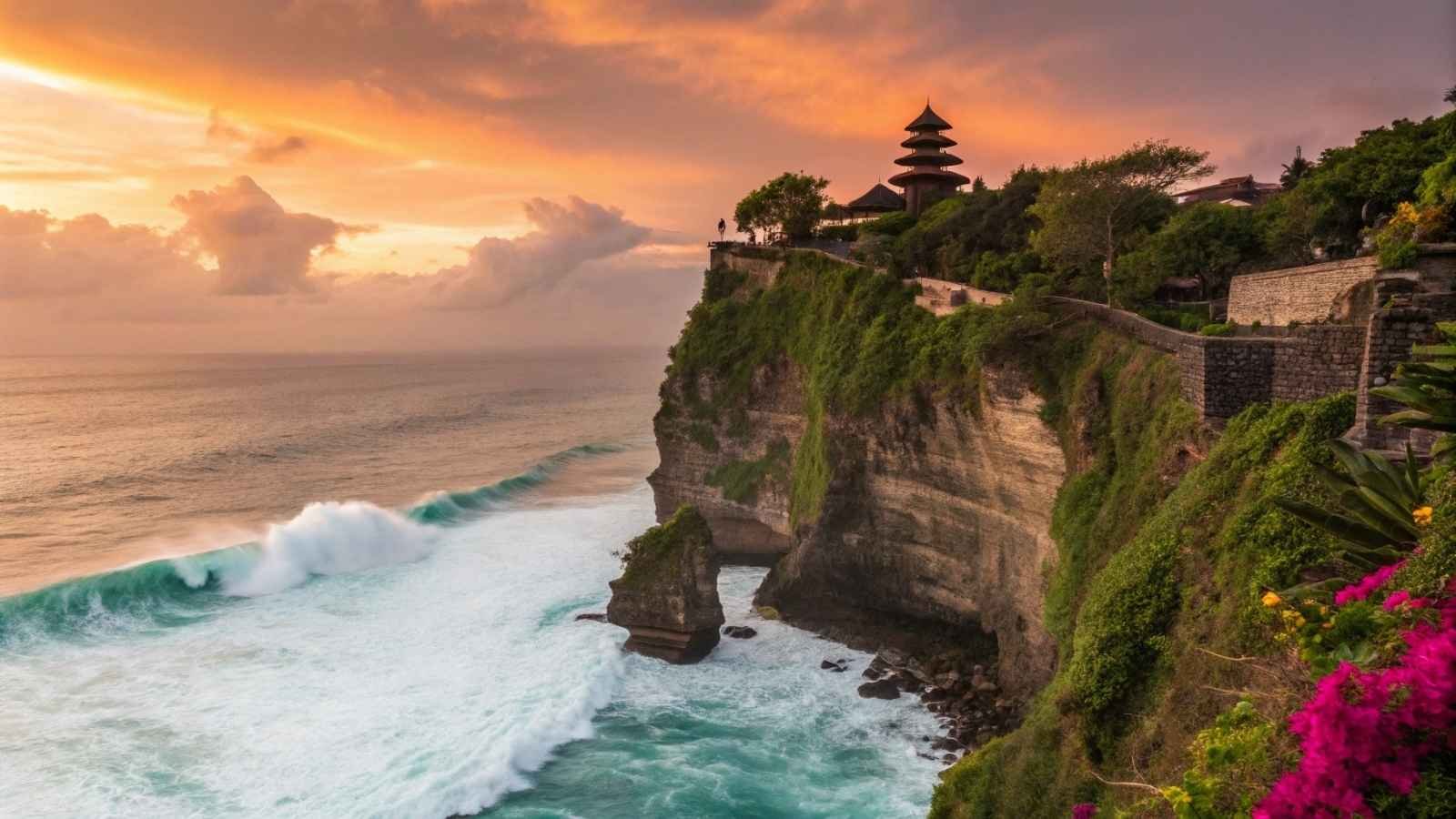
Bali’s sunsets are as diverse as its landscapes. From the laid-back beaches of Seminyak to the dramatic cliffs of Uluwatu, each setting feels unique. The island’s tropical climate brings explosive color bursts—fiery reds, bold purples, deep blues—often reflected in shimmering waves. Surfers silhouetted against the glow add a cinematic touch.
The cultural element gives Bali’s sunsets a different weight. Watching the day end from Uluwatu Temple, with the sound of traditional Kecak chants rising as the horizon ignites, feels almost sacred. Even the simple act of sitting on beanbags at a beach café, toes in the sand, feels elevated when the whole sky turns liquid gold.
The key to Bali is movement—each coast offers a slightly different personality. If you’re chasing the best golden hours, hopping between beaches is part of the fun.
Quick tips for Bali sunsets:
- Best months to visit: April–October (dry season, less haze)
- Best viewing spots: Tanah Lot, Uluwatu Temple, Seminyak Beach
- Crowd factor: Busy at main beaches; quieter at northern and eastern coasts
- Best way to enjoy: Pair with a temple visit or beach café for atmosphere
13. Atacama Desert, Chile
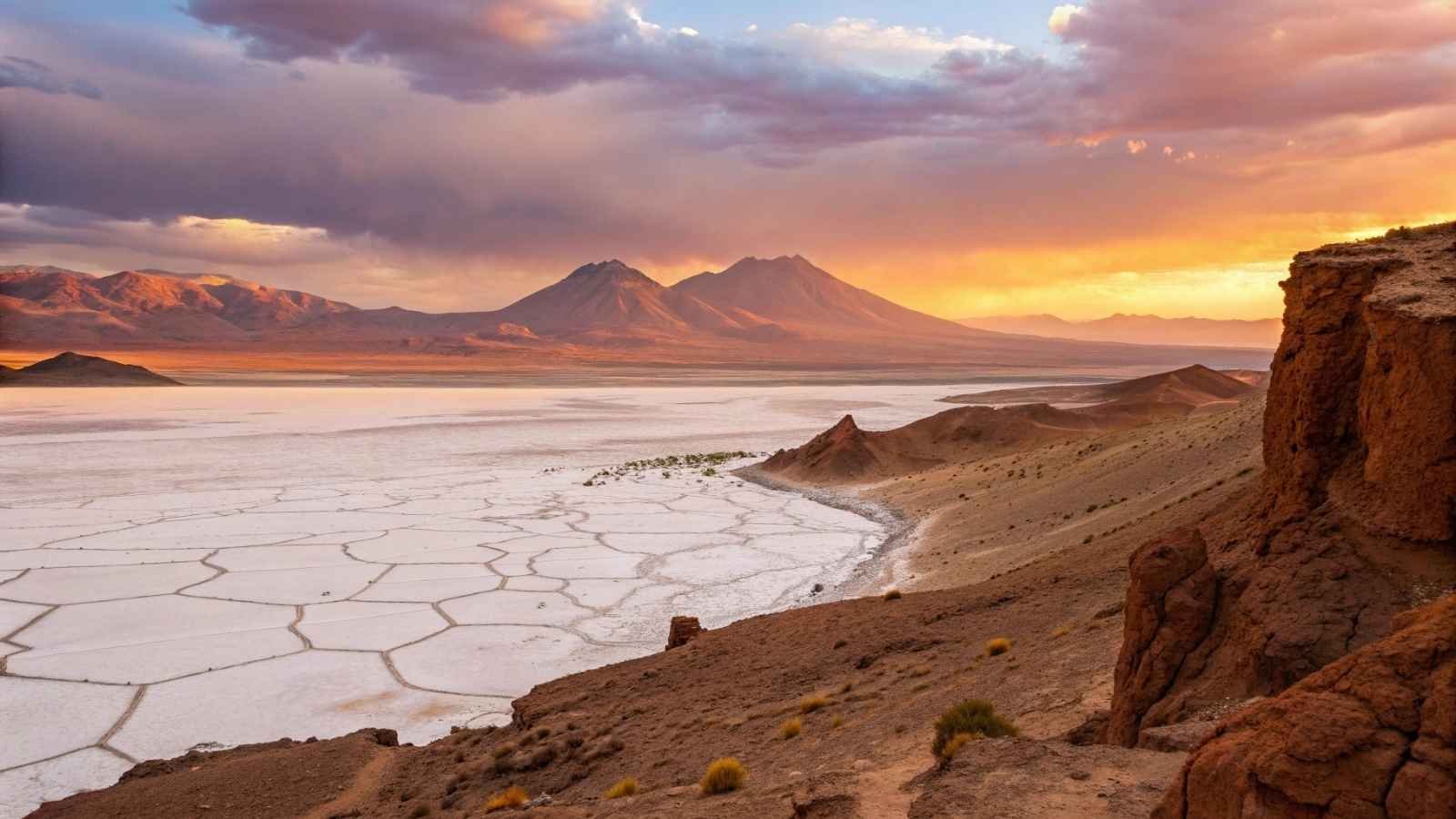
Few places surprise like the Atacama Desert. Here, sunset feels like a planetary event—a collision of light and shadow over Mars-like landscapes. Stark mountains, salt flats, and cracked earth reflect brilliant shades of pink, orange, and violet. The thin, dry air makes everything more vivid, almost surreal.
The stillness of this desert is part of its power. There’s no ocean or jungle to compete with; just silence, wind, and space. As the sun sets, shadows stretch and the stars begin to tease their arrival before nightfall is complete. Photographers adore this hour because the colors last longer than expected, washing the land in otherworldly hues.
For the best experience, go high. A ridge or dune will give you a sweeping panorama that feels endless.
Quick tips for Atacama sunsets:
- Best months to visit: March–November (clear skies most of the year)
- Best viewing spots: Valle de la Luna, El Tatio region, Piedras Rojas
- Crowd factor: Light; remote areas give plenty of space
- Best way to enjoy: Stay until twilight to catch the first burst of stars
14. Vaadhoo Island, Maldives (Sea of Stars)
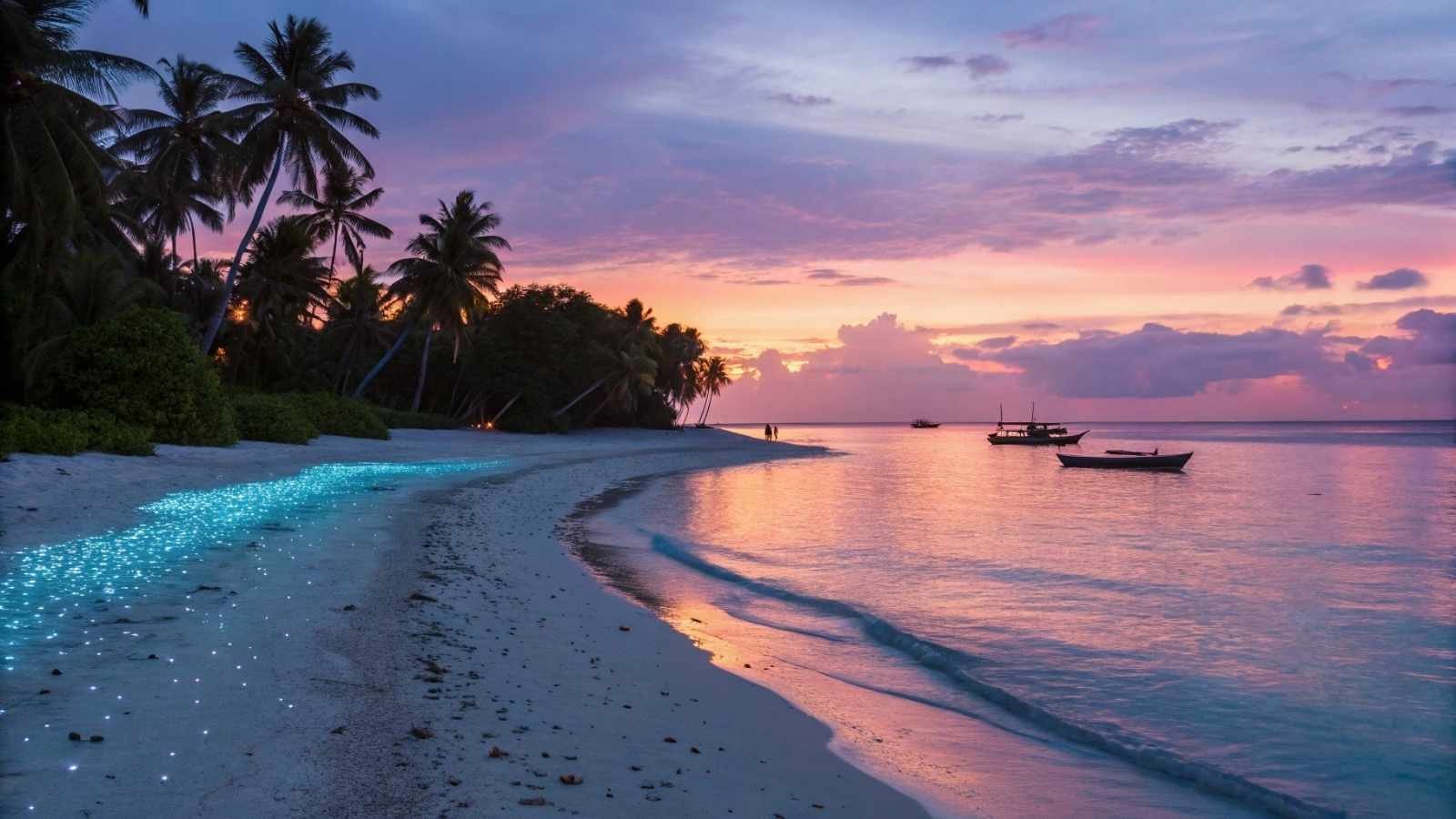
This one bends the rules a little because it’s not just about the sun—it’s about what happens after. On Vaadhoo Island, the sunset is serene: soft apricots, muted blues, calm seas. But when darkness falls, the beach transforms into something out of a dream. The famous “Sea of Stars” phenomenon, caused by bioluminescent plankton, turns the shoreline into a glowing carpet of light.
It’s rare, unpredictable, and mesmerizing. One moment you’re watching a peaceful Indian Ocean sunset, and the next you’re walking along a beach that sparkles under your feet. The glow is subtle but hypnotic, making this spot as Instagrammable as it is memorable.
Patience is key here. The phenomenon is seasonal and sometimes fleeting, but if you catch it, the combination of sunset and night glow will be one for your lifetime list.
Quick tips for Vaadhoo Island sunsets:
- Best months to visit: June–October (plankton more likely to appear)
- Best viewing spots: Vaadhoo beach itself; keep light pollution minimal
- Crowd factor: Small island; can get busy during peak bioluminescence
- Best way to enjoy: Stay overnight nearby to increase your chances of seeing the glow






